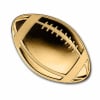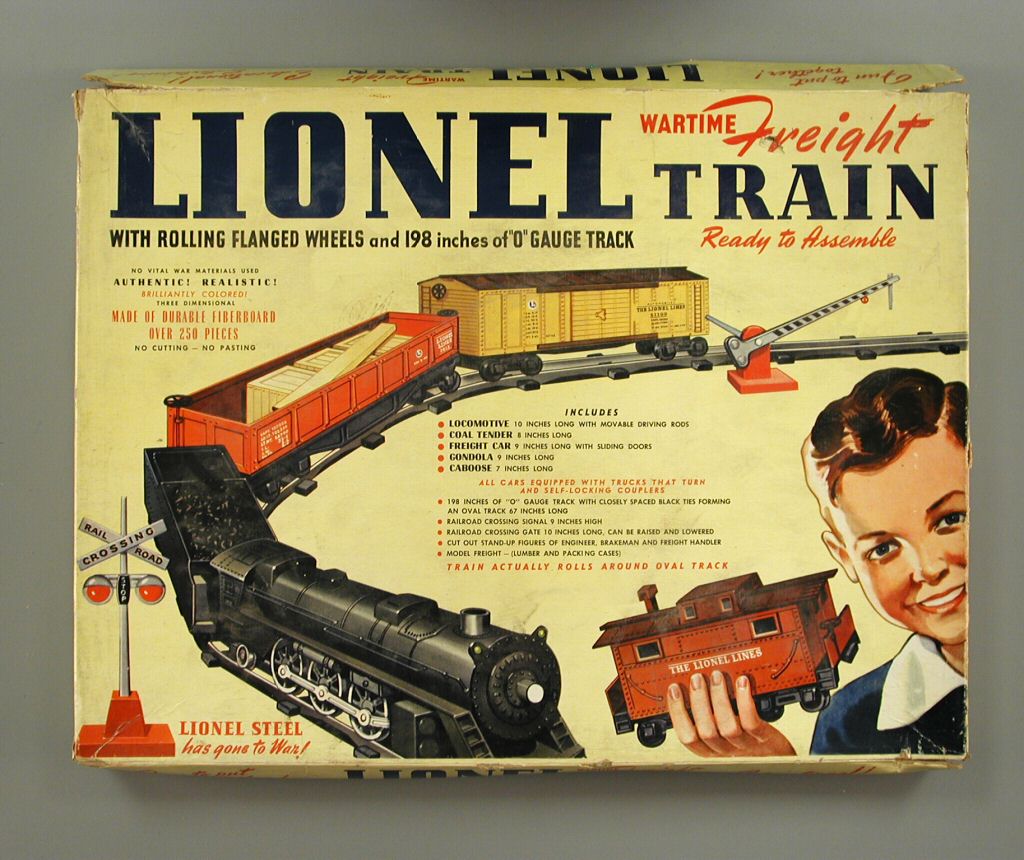Welcome to the Hardcore Husky Forums. Folks who are well-known in Cyberland and not that dumb.
So, they told me I need a hobby...

Swaye
Moderator, Swaye's Wigwam Posts: 41,749 
in Tug Tavern
So rehab people say I need a hobby. I have decided to do model trains because one of my Dads got me one when I was a kid and it was fun until I put M-80s in the cab and blew it to shit. Anybody know anything about model trains? Is that even a thing anymore? Or should I go with needlepoint?
TIA
TIA
Comments
-
I suggest running your own hobby bored
-
I hear those can get out of hand quickly.
-
Seriously one of you fucks tell me something about model trains. I have group in ten minutes. Assholes.
-
Railway modelling (UK, Australia and Ireland) or model railroading (US and Canada) is a hobby in which rail transport systems are modelled at a reduced scale.
The scale models include locomotives, rolling stock, streetcars, tracks, signalling and landscapes including: countryside, roads, buildings, vehicles, model figures, lights, and features such as rivers, hills, and canyons.
The earliest model railways were the 'carpet railways' in the 1840s. Electric trains appeared around the start of the 20th century, but these were crude likenesses. Model trains today are more realistic. Today modellers create model railway layouts, often recreating real locations and periods throughout history.
Contents
1 General description
2 Scales and gauges
3 Modules
4 Couplers and connectors
5 Landscaping
6 Weathering
7 Methods of power
7.1 Clockwork
7.2 Electricity
7.3 Live steam
7.4 Internal combustion
8 Scratch building
9 Control
10 Model railway manufacturers
11 Magazines
12 Famous model railroaders
13 Layout standards organizations
14 In popular culture
15 See also
16 References
17 External links
General description
Involvement ranges from possession of a train set to spending hours and large sums of money on a large and exacting model of a railroad and the scenery through which it passes, called a "layout". Hobbyists, called "railway modellers" or "model railroaders", may maintain models large enough to ride (see Live steam, Ridable miniature railway and Backyard railroad).
Modellers may collect model trains, building a landscape for the trains to pass through. They may also operate their own railroad in miniature. For some modellers, the goal of building a layout is to eventually run it as if it were a real railroad (if the layout is based on the fancy of the builder) or as the real railroad did (if the layout is based on a prototype). If modellers choose to model a prototype, they may reproduce track-by-track reproductions of the real railroad in miniature, often using prototype track diagrams and historic maps.
Layouts vary from a circle or oval of track to realistic reproductions of real places modelled to scale. Probably the largest model landscape in the UK is in the Pendon Museum in Oxfordshire, UK, where an EM gauge (same 1:76.2 scale as 00 but with more accurate track gauge) model of the Vale of White Horse in the 1930s is under construction. The museum also houses one of the earliest scenic models – the Madder Valley layout built by John Ahern. This was built in the late 1930s to late 1950s and brought in realistic modelling, receiving coverage on both sides of the Atlantic in the magazines Model Railway News and Model Railroader. Bekonscot in Buckinghamshire is the oldest model village and includes a model railway, dating from the 1930s. The world's largest model railroad in H0 scale is the Miniatur Wunderland in Hamburg, Germany. The largest live steam layout, with 25 miles (40 km) of track is 'Train Mountain' in Chiloquin, Oregon, U.S.[1]
Model railroad clubs exist where enthusiasts meet. Clubs often display models for the public. One specialist branch concentrates on larger scales and gauges, commonly using track gauges from 3.5 to 7.5 inches (89 to 191 mm). Models in these scales are usually hand-built and powered by live steam, or diesel-hydraulic, and the engines are often powerful enough to haul dozens of human passengers.
The Tech Model Railroad Club (TMRC) at MIT in the 1950s pioneered automatic control of track-switching by using telephone relays.
The oldest society is 'The Model Railway Club'[2] (established 1910), near Kings Cross, London, UK. As well as building model railways, it has 5,000 books and periodicals. Similarly, 'The Historical Model Railway Society'[3] at Butterley, near Ripley, Derbyshire specialises in historical matters and has archives available to members and non-members.
Scales and gauges
Main articles: Rail transport modelling scales and Rail transport modelling standards
The words scale and gauge seem at first interchangeable but their meanings are different. Scale is the model's measurement as a proportion to the original, while gauge is the measurement between the rails.
The size of engines depends on the scale and can vary from 700 mm (27.6 in) tall for the largest ridable live steam scales such as 1:4, down to matchbox size for the smallest: Z-scale (1:220) or T scale (1:450). A typical HO (1:87) engine is 50 mm (1.97 in) tall, and 100 to 300 mm (3.94 to 11.81 in) long. The most popular scales are: G scale, Gauge 1, O scale, S scale, HO scale (in Britain, the similar OO), TT scale, and N scale (1:160 in the United States, but 1:148 in the UK). HO and OO are the most popular. Popular narrow-gauge scales include Sn3, HOn3 and Nn3, which are the same in scale as S, HO and N except with a narrower spacing between the tracks (in these examples, a scale 3 ft (914 mm) instead of the 4 ft 8 1⁄2 in (1,435 mm) standard gauge).
The largest common scale is 1:8, with 1:4 sometimes used for park rides. G scale (Garden, 1:24 scale) is most popular for backyard modelling. It is easier to fit a G scale model into a garden and keep scenery proportional to the trains. Gauge 1 and Gauge 3 are also popular for gardens. O, S, HO, and N scale are more often used indoors. Lionel trains in O scale (1:48 scale) are popular toys. S refers to 1:64 scale.[4][5]
Scale Ratio
T 1:450
ZZ 1:300
Z 1:220
N 1:160
2mm 1:152
TT 1:120
3mm 1:101
HO 1:87
S 1:64
O 1:48
G 1:22.5
At first, model railways were not to scale. Aided by trade associations such as the National Model Railroad Association (NMRA) and Normen Europäischer Modelleisenbahnen (NEM), manufacturers and hobbyists soon arrived at de facto standards for interchangeability, such as gauge, but trains were only a rough approximation to the real thing. Official scales for the gauges were drawn up but not at first rigidly followed and not necessarily correctly proportioned for the gauge chosen. O (zero) gauge trains, for instance, operate on track too widely spaced in the United States as the scale is accepted as 1:48 whereas in Britain O gauge uses a ratio of 43.5:1 or 7 mm/1 foot and the gauge is near to correct. British OO standards operate on track significantly too narrow. The 4 mm/1 foot scale on a 16.5 mm (0.65 in) gauge corresponds to a track gauge of 4 ft 1 1⁄2 in (1,257 mm), 7 inches or 178 millimetres (undersized). 16.5 mm (0.65 in) gauge corresponds to 4 ft 8 1⁄2 in (1,435 mm) standard gauge in HO (half-O) 3.5 mm/1 foot or 1:87. This arose due to British locomotives and rolling stock being smaller than those found elsewhere, leading to an increase in scale to enable HO scale mechanisms to be used. Most commercial scales have standards that include wheel flanges that are too deep, wheel treads that are too wide, and rail tracks that are too large. In HO scale, the rail heights are codes 100, 87, 53
Later, modellers became dissatisfied with inaccuracies and developed standards in which everything is correctly scaled. These are used by modellers but have not spread to mass-production because the inaccuracies and overscale properties of the commercial scales ensure reliable operation and allow for shortcuts necessary for cost control. The finescale standards include the UK's P4, and the even finer S4, which uses track dimensions scaled from the prototype. This 4 mm:1 ft modelling uses wheels 2 mm (0.079 in) or less wide running on track with a gauge of 18.83 mm (0.741 in). Check-rail and wing-rail clearances are similarly accurate.
A compromise of P4 and OO is 'EM' which uses a gauge of 18.2 mm (0.717 in) with more generous tolerances than P4 for check clearances. It gives a better appearance than OO though pointwork is not as close to reality as P4. It suits many where time and improved appearance are important. There is a small following of finescale OO which uses the same 16.5mm gauge as OO, but with the finer scale wheels and smaller clearances as used with EM- it is essentially 'EM-minus-1.7mm.'
Modules
Many groups build modules, which are sections of layouts, and can be joined together to form a larger layout, for meetings or for special occasions. For each kind of module system, there is an interface standard, so that modules made by different participants may be connected, even if they have never been connected before. Many of these module types are listed in the Layout standards organizations section of this article.
Couplers and connectors
Main article: Railway coupling § Model trains
In addition to different scales, there are also different types of couplers for connecting cars, which are not compatible with each other.
-
I hate and love you all at the same time. I get very emotional before group therapy.

-
-
These were fun

-
Lionel trains are the best

-
Human trafficking for illicit sexual purposes via railcar - that's Olde Skoole - I like it...
I'd get little plastic army men, scrape the color away, clip off the weapons, spread their legs and paint 'em up like ho's...
Use sugar cubes as huge amounts of Bolivian Marching powder...
Olde West Enterprises- run by The Red Man - just like The Great Spirit intended... -
tenndawg said:
Human trafficking for illicit sexual purposes via railcar - that's Olde Skoole - I like it...
I'd get little plastic army men, scrape the color away, clip off the weapons, spread their legs and paint 'em up like ho's...
Use sugar cubes as huge amounts of Bolivian Marching powder...
Olde West Enterprises- run by The Red Man - just likeThe Great SpiritSpirit Horse intended...





